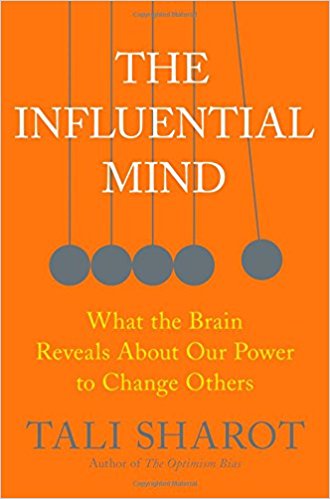

What's New

Words of Wisdom
52
cards and 15 activities to spark conversations and make sense of learning.
Learn more HERE.
What We Do
The Firefly Group helps people make sense of what they learn and experience.
Whether facilitating a group for better decision-making, keynoting a conference, leading a training, or writing an instructional design, we use novel methods that engage, spark creativity, and produce memorable results.
 If
this sounds like a good direction for your organization, let's talk about
how we might collaborate! Please give me a call (802.257.7247) or send an
. - Brian
If
this sounds like a good direction for your organization, let's talk about
how we might collaborate! Please give me a call (802.257.7247) or send an
. - Brian
 Your ETR (Estimated Time to Read): 10 minutes Your ETII (Estimated Time to Implement Ideas): 5 weeks |
What
can you teach with a eight washers tethered to a string?
Watch my video and find out!
December
2017
Mind Control
|
Say
It Quick |
Discoveries bits of serendipity to inspire and motivate |
Ideas fuel for your own continuous learning |
Activities tips and tricks you can try today |
|
A Public Statement - Commitment in a message |
Mind Control - A review of The Influential Mind |
I Won't Budge - The difficulty of changing minds |
Confirmation Bias Exposed - Learn to question your beliefs |
Is mind control on the horizon of humankind? Not for a long time but that doesn't mean you can't improve the influence you do have to change the thinking and behavior of others. This month we feature a description of The Influential Mind by Tali Sharot. Learn to use the brain links that cause people to change their mind beginning with this story in exactly 99 Words.
A Public Statement
A white pickup truck, bent and beginning to rust, drove past. On the back was stenciled "Just Married 7/15/16." Yet this was more than a year after the nuptial date and the sign had been scribed not with the usual shaving cream or cardboard sign but permanently!I marveled that anyone would deliberately lower the resale value of even a modest vehicle. Was this an expression of jaded ennui, eternal optimism, or a perpetual reminder of what's really important?
More significantly, what am I similarly committed to that I'd make a traveling billboard to advertise it?
 Mind
Control
Mind
Control
Tali Sharot's book, The Influential Mind: What the Brain Reveals About
Our Power to Change Others, enters our culture at a time when we are all
shouting at each other but unable to convince anyone of our point of view.
Sharot links Psychology with the science of brain imagery to explain why we believe certain ideas and what it takes to change those beliefs. It is a useful book for leaders who are expected to drive the actions of others and for educators who are expected to change others' behavior.
The book explains why long-held beliefs have such staying power even in the face of new and contradictory information. And it explains how our emotions, our desire for belonging, and our sense of autonomy along with incentives, mental state, and curiosity can be used in various combinations to motivate individuals or change minds.
Sharot discusses several factors that govern the way our brains work and affect what we feel, and, therefore, think.
Priors - Established beliefs and previous ideas are difficult to change because they are embedded in our world view. This is fine until we encounter information that we initially learned wrong. We tend to pick and choose information that reinforces what we already believe. (See confirmation bias referenced in the Ideas and Activity sections below.) New information that counters what we already know is either dismissed (fake news) or we invent new arguments to support the old ideas.
Emotion - Emotions are "bodily reactions to external events or internal thoughts." We are predisposed to synch our emotions with others'. The physiological state of the listener becomes aligned with that of the speaker so it is more likely the listener will interpret information the same way. People listening to a story will not only share neural activity in the same region of their brain as the storyteller, they will even anticipate the emotional state of the speaker. The regions of their brain light up before the speaker's does.
Incentives - Our brains are wired to approach a reward but to freeze when encountering a threat or fear. If you want to prevent someone from doing something, a threat will usually cause them to stop or do nothing. If you want someone to take action, remind them of something positive, an immediate reward.
Agency - If we can give up some of our own need to control and consider the other person's need for agency, we can influence their behavior more. When people make their own choices, even if limited, they are happier and more likely to choose what we want them to choose. It's more effective to guide people toward solutions than to give orders.
Curiosity - We love to fill gaps of information. We receive the same sort of dopamine release when we expect information as we get when we receive tangible rewards. What you know affects both what you decide and how you feel because knowledge forms the core of your beliefs and what you believe affects your level of happiness. We are motivated by gaining rewards and avoiding pain. We are also motivated by the belief that we will gain rewards and avoid pain. We are more curious about information that will provide a reward; less curious about information that allows us to avoid pain.
State - When under threat or stress, people are more likely to take in negative information than when relaxed. When stressed, we are more likely to be influenced by bad news. We can go into a negative spiral (depression). Under stress, we fixate on identifying and avoiding danger. To be influential, you need to create a match between the opinion you are offering and the mental state of the person you are speaking to.
Other People - When we see another's choice, we automatically ascribe usefulness to their decision. Our brain's rule is that if something is valuable to another person, it will likely have value to us too. Your amygdala reacts emotionally to one person's opinion and triggers a reaction in your frontal lobes that prevents you from altering that opinion if it turns out to be false. We observe not only the other person's choice but also the consequences that came to that person. We learn from observing other people. This has ramifications for coming to consensus in a group and explains the process of Group Think.
In the last chapter, The Influential Mind takes a small step toward the distant future with the description of an interesting experiment. The neural activity of one person doing a simple action, moving their finger, was recorded and digitized. That signal was sent across the globe to stimulate the identical location in another person's brain. That person's finger moved too. Look for mind control on the horizon of the future.
More Information:
The Influential Mind: What the Brain Reveals About Our Power to Change Others by Tali Sharot, Henry Holt and Co., New York © 2017, ISBN 9781627792653
I Won't Budge
Nothing you say could convince me otherwise.
Take any controversial issue and you'll find at least two opposing viewpoints and a lot of arguing. What you won't find are many people changing their minds.
The 99-Word Story illustrates a commitment to a belief and a value system. It's a metaphor for confirmation bias; an idea or world view you cannot easily change. However, unlike the person in the 99-Word Story who wrote a bold statement all over his vehicle, with confirmation bias, you don't really realize, or even acknowledge, that you have it. You don't consciously decide to commit to a particular point of view forever.
It is admirable to make a decision or have a firmly established point of view and stick with it - especially when it's a solid and true position. But when it isn't, we are left wondering why someone would stick with their original but faulted stance. It may be instructive to speculate.
Possible reasons someone won't change their established views:
- Pride - Is the person so vane they cannot admit a mistake?
- Ignorance - Does the person not comprehend the new knowledge?
- Tradition - Is the pull of standard convention too strong to overcome? " Loyalty - Does family, tribe, or national affiliation overshadow valid information?
- Biology - Are we talking about well-worn neural pathways that cannot be detoured?
- Fear - Is the person resistant to change or averse to risk?
- Reward - What personal gain or pleasure does the person receive with the status quo?
- Sense-Making - Would accepting the new viewpoint upset the person's entire world view?
It is very easy to ignore information we don't like and very difficult to admit we are influenced by our preconceived notions. But it's essential to question the viability of our ideas if we wish to learn, grow, and influence others. The first step, then, is learning to look for our biases. For clues about that, try the Activity that follows.
 Confirmation
Bias Exposed
Confirmation
Bias Exposed
We are all affected by confirmation bias. It seems impossible to know exactly
how or when our preconceived notions are exerting too much influence because
our biases are deeply imbedded below our awareness. Perhaps the best we can
do is become more aware of the phenomenon. That way we can at least question
whether we are ignoring important evidence.
Here is an activity to raise the issue of confirmation bias among your team so that you can begin to discuss its effect on group decisions.
Black White Grey
Goal: to describe confirmation bias and its effect on decision-making
Time: 20 minutes
Materials: A copy of either Figure A or Figure B for each person (Click HERE for a PDF)
Participants: Any numberProcedure:
Divide the participants into two groups and give a copy of Figure A to each person in one group and a copy of Figure B to each person in the other group. Ask a few people in each group to describe what they see on their card.Possible responses from those with Figure A: A white square with a grey circle; A dark circle in a light square. Possible responses from those with Figure B: A black square with a grey circle; A light circle in a dark square.
Now ask each person to find a partner who has the opposite Figure that they have. Ask them to hold their copies of Figure A and Figure B side-by-side and determine which has the darker circle. Take a few conclusions from several pairs.
Next, ask each person to fold their Figure in half and hold it next to their partner's so they make a complete circle between them. Again ask which has the darker circle. (Comparing circles to circles, they will look the same.)
Invite people to speculate about what is going on; why the circles appeared different initially but now look the same.
Provide this explanation of why the circles change their appearance: All the data our senses pick up is compared to something else. There is no specific intensity of light that produces white or black so the degree of darkness is dependent on the background. For example, black is only black when next to something lighter.
This simple experiment is a metaphor that illustrates confirmation bias - a tendency we all have to favor our own point of view even when presented with new and contradictory information. It demonstrates that the context for all of our decisions is as important as the choice we make. Any new idea we encounter (the grey circle) is held side-by-side against the ideas we already have. It is unavoidable that the history and context of our knowledge base surrounds and affects how we view the new information. We are predisposed - and hard wired - to favor what we already know.
Invite the whole group to engage in a substantive discussion of confirmation bias by using some of the following questions.
Discussion:
- How confident did you feel about which circle was darker when you first compared your card with your partner's?
- How did you react when you folded your card and compared your circle directly with your partner's?
- What examples of confirmation bias have you seen in other people? (e.g. People who support a politician even after that person has suffered a loss of reputation.) How have those people justified keeping their original position?
- Can you identify a time you were the victim of your own confirmation bias - why or why not?
- Why do you think it is so difficult for us to change our opinion about controversial issues?
- Confirmation bias affects us as individuals. How might it affect the dynamics of a team or larger group? (e.g. Suppressing discussion or contributing to group think)
- What are some ways confirmation bias might be positive? (e.g. Because they have withstood the test of time, some of our existing beliefs may be more viable.)
- What are some strategies to avoid the negative effects of confirmation bias? (e.g. Seek and test alternative hypotheses)
- What might you now do differently when confronted with a very different viewpoint from your own in the future?
Please give this activity a trial with your group then your experience.
|
Whether you need a keynote speaker, or help with strategic planning, performance improvement, or training facilitators and trainers in your organization, I look forward to your call (802.380.4360) or . -- Brian |
Read previous
issues. Click Library!
To add or delete your name to our mailing list, email
with a short note in the subject line.
I want this newsletter to be practical, succinct, and thoughtful. If you have suggestions about how I can meet these criteria, please let me know! Send me an with your thoughts and ideas.
Home
| Services | Products
| Mission | Ideas
| The Group | The
Buzz
(c)
2017 The Firefly Group